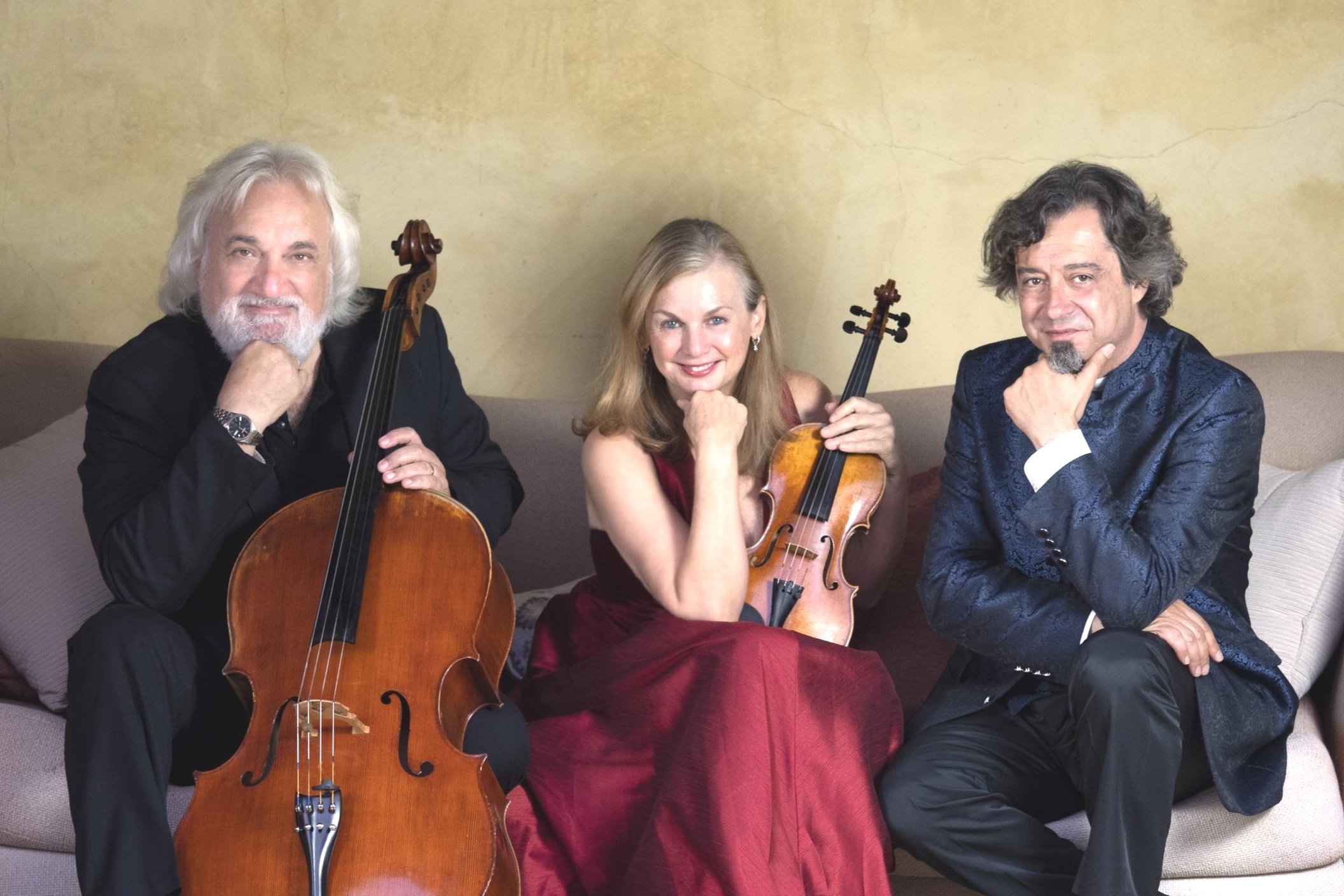October 2, 2022
Los Angeles Piano Trio
© Los Angeles Piano TrioBiography
Fabio Bidini - piano
Margaret Batjer - violin
Andrew Shulman - cello
Venerated artists and long-time Los Angeles residents Fabio Bidini (piano), Margaret Batjer (violin), and Andrew Shulman (cello) founded the Los Angeles Piano Trio in 2020, building upon their individual distinguished careers as internationally acclaimed soloists, chamber musicians, recording artists, and pedagogues. These three like-minded musicians have performed together in various duo and ensemble combinations over the years. Each infuses the Los Angeles Piano Trio with decades of wide-ranging musical experience at the highest level. The Trio offers all the core repertory for this formation (Haydn, Mozart, Beethoven, Brahms, Dvořák, Shostakovich, Ravel and others), impressing audiences and critics alike with its fresh, inventive interpretations, exceptional technical prowess, and abiding musical passion. In addition, the Trio regularly introduces new and seldom-played works reflecting their home city’s diverse arts scene. LMMC debut.
https://www.losangelespianotrio.com/
Notes
Mozart’s sudden attention to the medium of the piano trio in the years 1786-1788 was surely a reflection of the growing popularity of this formation, especially in amateur circles. The Trio K. 542 opens with a gracious theme for the piano alone, and shortly thereafter is richly embellished by the two string instruments. Mozart gives the second theme to the violin, a theme already adumbrated in the foregoing transitional material. The second movement, a rondo with three episodes alternating with the main theme, has a melancholy tinge to it, while the finale (also a rondo) breezes along with insouciant nonchalance.
Nearly all of the works in Turina’s substantial chamber music catalogue include piano, beginning with his Op. 1 (a piano quintet). His Piano Trio No. 2 combines elements of traditional formal structures with Spanish influences (melodic lines, chord progressions, rhythmic patterns).
Chamber music enthusiasts may know Rachmaninoff’s Trio élégiaque in D minor, a 45-minute , three-movement work conceived on a massive scale, but that is not the Trio élégiaque we hear this afternoon. This one is in G minor, written a year earlier (1892) at the age of 18. This single-movement work bears the influence of Tchaikovsky, yet it sounds unmistakably like Rachmaninoff with its somber moods, dark colors, yearning melancholy, and piano writing of near-virtuosic proportions.
C major is a key we have come to associate with grand musical statements brimming with ideas and imbued with intellectual strength: Mozart’s Jupiter Symphony, all three of Beethoven’s Leonore Overtures and the finale of Fidelio, Schumann’s Fantasy Op. 17, Schubert’s Great Symphony and his equally great String Quintet. Brahms too may have felt himself under the shadow of these works, for aside from his youthful and exuberant First Piano Sonata (Op. 1), he did not turn to this key for a large-scale work again until his Second Piano Trio of 1882, a work that well deserves to inhabit the Olympian heights of its C-major predecessors, if not in length, at least in breadth and splendor.
Robert Markow
Programme
MOZART Trio in E major, K. 542 (1788)
(1756 - 1791)
TURINA Trio No. 2 in B minor,
(1882 - 1949) Opus 76 (1933)
RACHMANINOFF Trio élégiaque No. 1
(1873 - 1943) in G minor (1892)
BRAHMS Trio No. 2 in C major,
(1833 - 1897) Opus 87 (1880 - 1882)
Arts Management Group
-
Downloads
-
Next Concert
Talich Quartet, strings
October 23, 2022 at 3:30 p.m.

